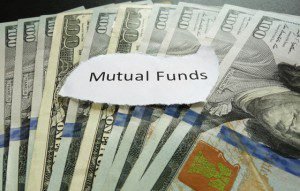Wealth Management

We know you’ve worked hard. We understand that you’ve put in the countless hours of study and training, decades of hard work, the occasional late nights, and the constant approach of deadlines. You’ve gone above and beyond to excel in your field, and in your career. We understand, … we did the same. Now what do you do with what you’ve saved? Your expertise lies in your field, not in investing.
While many people choose to do their own taxes, or self-diagnose on WebMD, and even manage their own investments, we know that the investment arena is challenging and an experienced coach can help you create an effective game plan. Investing is no place for amateurs, yet so many amateurs invest without understanding the marketplace.
There are many ways to invest your money, more than most people use, or have even heard about. To decide which investment vehicles are suitable for you, you need to first determine where you are, and then where you WANT to be. Not “need”, but “want”. Then you create a strategy to get you there, and through the rest of your life. Investments are like golf clubs; they are simply tools. If you wanted to join the PGA Tour, would you first go out and buy the best and most expensive clubs? No, you would search for a great coach and learn to play the game. You’d learn the nuances, the finesse, the rules, the techniques, and the secrets. Once you know what your style, limitations, handicap, goals, and your assets (as a golfer) are, then you pick the best clubs for your type of game.
Optimal Investment Strategies
The array of investment options today is vast, and there is no single investment category that meets every need. There simply is no such thing as a perfect investment. An ‘optimized’ structure is a well-crafted and diversified blend. All asset classes have risks, benefits and limitations. They also have different tax implications, liquidity, accessibility, performance profiles, and ‘best uses’. Balancing those benefits and limitations can be a challenge, especially if you don’t understand when, how, and why each investment is used.
Most investors have a basic understanding of the major classes of investments, but are unlikely to understand how they fit together in a well-designed portfolio. While there are a wide array of investments, many investors are only aware of the products and investments that their advisor or broker have available, or have access to. As an independent firm, we are not limited to any single financial product provider, but are free to search the marketplace for solutions that best suit each client’s unique needs.
This is important, because we approach everything from a risk-managed perspective, and our investment and portfolio mix reflects that. Our goal is to equal or exceed market performance, but with lower risk and volatility, and to better plan for tax and inflation uncertainty. Because we can access a wide array of investment options and classes, we can use a wide array of investments to create effective portfolio diversification, both across asset classes, and within each class. This design is intended to better equip your portfolio to handle the gyrations of the market and to give it a better chance of hitting your goals.
These asset and investment classes include the more traditionally utilized Bonds (“Fixed Income”), Stocks (“Equities”), and Mutual Funds, often along with less traditional Alternative Investments and Non-“Investment” Assets (Settlements, REITs, Structured Cash Flows, Insurance Products, etc.).
Bonds & Fixed Income
Grouped under the general category we refer to as “fixed-income securities”, a bond is any security that is based on debt. When you buy a bond, you become a creditor, as you are essentially loaning money to a company or to a governmental entity, which could be the United States, your state or another state, your county, an agency, a toll-road project, or a foreign government or corporation. In return, they agree to pay you a specified rate of interest on your money, called the ‘coupon rate’, and when the bond matures, to pay you the final interest payment plus the bond’s face value. So, unlike the purchase of a stock, a bond has an expiration date called the maturity, when the debt is repaid in full.

Despite the fact that the US bond market is much larger than the stock market, most bonds do not trade on exchanges, but Over-The-Counter (OTC), meaning they trade between a buyer and seller directly, with an intermediary, like a broker. Why? Bonds are often considered to be more complicated than stocks, in that they are not as uniform in features as stocks are. Bonds can have many different attributes: credit quality, maturity dates, changing coupon rates, variable rate coupons, callable and puttable attributes, sinking funds, required redemptions, conversion options, etc.
So why do investors buy them if they can be complicated? A benefit of bonds is that they are perceived to have lower risk relative to stocks, along with their scheduled and periodic interest payments of a fixed amount at a fixed frequency – hence the term, “fixed income”. Bonds are frequently used by advisors and investors to create a relatively consistent and predictable income stream. If you are buying bonds from a stable government, your investment is relatively stable and less likely to default. However, as we have observed in the last few years, many states and cities that were once considered ‘risk-free’ have proven to be otherwise. Municipal bonds (“munis”), historically considered ‘risk-free’ took a nearly 5% loss from April to September of 2013. So much for being “risk-free”. Like all investments, when investing in bonds there is the risk of potential loss of principle, but investors accept lower returns for government and municipal bonds because of the perceived lack of risk. In fact, the return on US government bonds is referred to as the “risk-free rate” in finance and economics.
 This perceived safety and stability of a governmental bond (or any governmental debt instrument), therefore, come at a cost… lower rates of return; returns that are generally lower than most other fixed income securities. Additionally, bonds really don’t appreciate in value, though they may increase in value due to interest rate declines. But that increase will not last. If you buy a bond for $1,000, then you will get that $1,000 back when you redeem the bond at maturity. In the present market climate, that’s not a high likelihood. So if the company that issued the bonds does incredibly well, bond holders won’t benefit from that. That means it is more likely they’ll decline in value, or stay about flat.
This perceived safety and stability of a governmental bond (or any governmental debt instrument), therefore, come at a cost… lower rates of return; returns that are generally lower than most other fixed income securities. Additionally, bonds really don’t appreciate in value, though they may increase in value due to interest rate declines. But that increase will not last. If you buy a bond for $1,000, then you will get that $1,000 back when you redeem the bond at maturity. In the present market climate, that’s not a high likelihood. So if the company that issued the bonds does incredibly well, bond holders won’t benefit from that. That means it is more likely they’ll decline in value, or stay about flat.
Example for Illustrative Purposes: If you bought $100,000 of newly issued bonds today at a 5% coupon rate, and held them until they matured in 10 years, you’d get your $100,000 back then, along with $5,000 a year in interest. Your last payment in 10 years would be a return of your $100,000 in principal, plus your final quarterly interest payment. If interest rate rise between the issue and maturity dates, the value of the bond will decline, as it will be worth less. Conversely, if interest rate decline, the value of the bond will increase. In either case, as the bond nears its maturity date, the value will approach the face amount, as the face amount is what the issuer will pay to redeem the bond at maturity. So if the inflation rate had been 2% per year over that 10-year period, your $100,000 would still be $100,000, but would only be worth $81,707 in today’s dollars.
Because bonds have a set interest rate (the ‘coupon rate’), and a fixed redemption value (the ‘face amount’), they will be redeemed at the face amount, no matter what happens in the marketplace or to interest rates. If the issuer faced credit or bankruptcy issues, the value could be less due to default or settlement. Thus, bonds have no real ability to protect you from inflation, so you must take some of that interest and reinvest it … which some (probably many) bond holders don’t. They consume the income and find themselves on a declining ‘fixed income’ after a while.
Another aspect of bonds that differ from stocks is the element of rating. Analysts can issue ‘buy’, ‘sell’, and ‘hold’ recommendations on stocks based on the analyst’s evaluation of expected performance. However, Bonds have more precise mathematical guidelines applied when being evaluated for their rating. Each issuer’s debt is scrutinized based on the issuer’s ability to repay by one of a handful of major rating agencies like S&P, Moody’s and Fitch.
Bonds can be investment grade or high-yield (sub-investment grade a.k.a. ‘junk bonds’). High-yield bonds are riskier than investment grade, hence the ‘high yield, and the term “junk”.
Stocks
When you purchase a share of stock you have ‘equity’ or actual ownership in that company. If you own 5% of the shares of a company, then you own 5% of the company. This ownership entitles you to a share of the company’s profits (if they pay dividends), and/or a share in the increased value of the stock (capital appreciation), and the right to vote at the shareholders’ meeting. Ironically, this ownership does not necessarily allow you on company property or give you an invitation to company picnics, or even discounts on the company’s products (wouldn’t that be nice). You’re more of a “silent owner”. Often, one of millions.
 While bonds are intended to provide a steady and predictable stream of income, Equities can be more volatile and unpredictable (as measured by standard deviation or volatility), constantly fluctuating in price, and many with no income (dividend) component at all. When you buy a stock, there are no guarantees by the company (or anyone for that matter) that you will make a profit or even earn back your investment. Some stocks pay dividends, and others do not. Which stocks you buy may be directly tied to your goals: are you seeking growth, income, or both? There are categories of stocks that can be used for each of these goals.
While bonds are intended to provide a steady and predictable stream of income, Equities can be more volatile and unpredictable (as measured by standard deviation or volatility), constantly fluctuating in price, and many with no income (dividend) component at all. When you buy a stock, there are no guarantees by the company (or anyone for that matter) that you will make a profit or even earn back your investment. Some stocks pay dividends, and others do not. Which stocks you buy may be directly tied to your goals: are you seeking growth, income, or both? There are categories of stocks that can be used for each of these goals.
Because stocks are viewed to have higher risk than bonds, investors expect correspondingly higher returns. The investor must assume the risk of losing some or all of their investments in a stock, and the additional ‘expected return’ they receive is referred to as the “risk premium”. A potential higher return paid to investors (a premium) for taking on the higher risk of an equity investment with no defined payback, rate of return, or collateral.
As you are likely aware, most Stocks trade on exchanges (NYSE, NASDAQ, etc.), so there is almost always someone to buy (a market maker) when you’re selling, and sell when you’re buying. This leads to liquidity amongst most large stocks in the US stock market. On the other end of the spectrum are Over-the-Counter (OTC) stocks, referred to as ‘penny stocks’. These are listed in the ‘Pink Sheets’ and do not trade on a major exchange.
Mutual Funds (MF’s)
These are a form of pooled investments that typically invest in equities and debt instruments but can also invest in real estate and commodities, or a combination of these. MF’s allow investors to pool their funds and achieve greater diversification than they otherwise would in their portfolios with a smaller investment amount. When you buy a MF, you pool your money with hundreds or even millions of other investors. If you wanted to buy 10 shares of 30 stocks, you might need tens of thousands of dollars, but you could invest just a few hundred dollars in a mutual fund and get the same level of diversification, though at a cost.
 Investing in a mutual fund also allows one, as part of a group, to take advantage of the services of a professional money/fund manager to select specific securities. Most MF’s are created with a specific strategy, industry, sector or even geography in mind, and they operate according to the fund’s prospectus which guides their investment choices. They have a distinct focus, and can be allowed to, or restricted from, investing in specific instruments, such as: large cap stocks, small cap stocks, governments bonds, corporate bonds, High Yield Bonds, sovereign debt, commercial paper, stocks in certain industries, stocks in certain countries, commodities, etc. The description of what the fund can and cannot invest in is contained in the fund prospectus.
Investing in a mutual fund also allows one, as part of a group, to take advantage of the services of a professional money/fund manager to select specific securities. Most MF’s are created with a specific strategy, industry, sector or even geography in mind, and they operate according to the fund’s prospectus which guides their investment choices. They have a distinct focus, and can be allowed to, or restricted from, investing in specific instruments, such as: large cap stocks, small cap stocks, governments bonds, corporate bonds, High Yield Bonds, sovereign debt, commercial paper, stocks in certain industries, stocks in certain countries, commodities, etc. The description of what the fund can and cannot invest in is contained in the fund prospectus.
The prospectus is the document that is sent to investors of the fund and can be obtained by anyone considering investing in the fund. Additionally, an updated prospectus is mailed to each investor every year, because it is required by law. If you know where to look, and read the prospectus along with the annual report, they can contain great information about the firm. Many investors, and indeed some advisors, focus only on the history of returns in the prospectus. Most prospectus show the last 5 years of performance. How do you think that will look for most MFs today? Can you name any fund or stock that hasn’t gone up dramatically since 2010? This simply isn’t enough information on which to base a decision, but for some advisors and investors, it is often the main criteria used.
A key selling point of a mutual fund is that you can invest your money without the time or the experience that would otherwise be required to make sound investment decisions. Theoretically, you should get a better return by giving your money to a professional than you would if you were to choose investments yourself. Unfortunately, this isn’t often the case, and most mutual funds under-perform their respective benchmarks. Keep in mind that MFs have costs, and their benchmarks do not, so the comparison isn’t usually apples-to-apples. Often, a fund has a few good years in its history, and then rests on those laurels. According to David Snowball, founder of MutualFundObserver.com, “If you can get a couple of decent years together and a decent story and then slide quietly into mediocrity, it’s a recipe for success for your fund company, and a recipe for disappointment for investors.”
There are some negative aspects to investing in mutual funds as well, so let’s consider the five biggest drawbacks.
- They often have sales loads getting INTO as well as getting OUT OF the mutual fund. You must buy from, and sell back to, the mutual fund company, as MFs are not traded on an exchange.
- Many of the fees and costs are disclosed in the prospectus, but many people don’t read the prospectus, and the fees may not be transparent when you invest in them.
- Mutual Funds must remain 80% or more invested in their primary market instrument, so even if the manager sees a major downturn or correction coming, they could be restricted in the options that they have available.
- Most large and popular mutual funds have only a 2 or 3-star Morningstar rating (July 31, 2012 http://www.cbsnews.com/news/morningstar-grades-10-largest-mutual-fund-families/). In other words, they’re average, or below average, in rating. Finding a good mutual fund among the nearly 44,000 in the world, and over 8,000 in the US alone, can be a nearly impossible task for most investors, and for most advisors.
- Lastly, although many funds refer to themselves as “active” or “actively managed”, what they really mean is ‘active” or “index”. An ‘active’ fund trade’s more often than an index fund which simply holds the constituent parts of the index or a sampling of it. For example, the S&P 500 is an index that is intended to represent the market as a whole. How often do the companies in the S&P 500 change? Not often, so you could purchase an S&P 500 index Mutual Fund which would have correspondingly little trading. When the S&P drops, so will your index fund. An active fund will trade more heavily since it will attempt to add value by better selecting stocks and taking steps to reduce the impact of market declines. This can add substantial costs to the fund, and as you can see from the Washington Post article, without much (if any) benefit. So an index MF has little protection from market volatility but has low costs. An active fund has higher costs in an attempt to outperform the market and reduce the impact of down cycles, but with little evidence that it can achieve those goals.
One other important consideration, especially for larger mutual funds, is that the they have to behave conservatively because of their size. Any trade they make will be observable by the investment community, so they can’t fly “under the radar”. If a $20 Billion fund decided that XYZ Corp was no longer a good investment, and they held 5% of their holdings in XYZ, that means they’d be trying to sell $1 billion in XYZ stock. It is highly likely that other institutional investors or traders would see that level of activity and likely jump on the band wagon, leading to a downward spiral in XYZ stock, just as the fund is trying to get out. While many investors feel a sense of comfort being in a large fund, they are also in a fund that cannot do much of anything without the investment world seeing and reacting to their moves. The adage that “There’s safety in numbers” generally does not apply, and it’s frequently quite the opposite. (“Mutual Fund Herding and the Impact on Stock Prices”; Russ Wermers, The Journal of Finance, Vol. Liv, No. 2, April 1999).
Active Mutual Fund Performance
“If they aren’t buying and selling their stocks at the wrong time, many people are staying put — in costly mutual funds that aren’t doing any better than the stock market overall. In fact, research shows that the number of active mutual funds outperforming the market on a consistent basis isn’t just low, it’s zero.
A study by S&P Dow Jones Indices looked at 2,862 actively managed, domestic stock mutual funds and pulled out the ones that were top performers in the 12 months starting March 2009, when the market bottomed out and the bull market began.
It then looked at which of those funds stayed in the top 25 percent for four years, through March 2014.” Jeff Sommer explained the results in the New York Times this weekend:
“Just two funds — the Hodges Small Cap fund and the AMG SouthernSun Small Cap fund — managed to hold on to their berths in the top quarter every year for five years running. And for the 2,862 funds as a whole, that record is even a little worse than you would have expected from random chance alone.
In other words, if all of the managers of the 2,862 funds hadn’t bothered to try to pick stocks at all — if they had merely flipped coins — they would, as a group, probably have produced better numbers.
By the end of this month, which would mark another year since the study was last updated, the list of persistently top performers is expected to shrink from two to zero”, Sommer wrote.
Non-“Investment” Assets
While we’ve focused on the major category of investments, there are many additional products that may be a suitable fit for a well-designed plan. These can include Life Insurance, Fixed Index and Equity Indexed Annuities, Structured Cash Flows, and Life Settlements. Until we, and YOU, understand your situation, goals, objectives, risk tolerance, and your future plans, we cannot and will not recommend anything, but once we do, because we are an independent firm, we are not limited to any single financial product provider, but are free to search the marketplace for solutions that best suit each client’s unique needs.
Because we already adhere to the Fiduciary standard, we must, both by law and code of ethics, provide solutions in the best interest of our clients. A duty we take very seriously, and which only a small percentage of our industry is governed by, or adheres to.
Call Us At 888-236-1739
Disclaimer
All written content on this site is for information/educational purposes only. Opinions expressed herein are solely those of Matrix Private Wealth Solutions Solutions, Inc. and our editorial staff. Material presented is believed to be from reliable sources; however, we make no representations as to its accuracy or completeness. All information and ideas should be discussed in detail with your individual adviser prior to implementation. Advisory services are offered by Matrix Private Wealth Solutions Solutions, Inc. a Registered Investment Advisor in the State of California. Insurance products and services are offered through Matrix Private Wealth Solutions, Corp. Matrix Private Wealth Solutions Investments, Inc and Matrix Private Wealth Solutions, Corp. are affiliated companies. The presence of this web site shall in no way be construed or interpreted as a solicitation to sell or offer to sell investment advisory services to any residents of any State other than the State of California or where otherwise legally permitted.
Bonds: Prices and yields are subject to change and availability. Prices and yields may fluctuate. Bond prices have an inverse relationship to the change in interest rates. As such, when interest rates increase, bond values decrease and when interest rates decrease, bond values increase.
Mutual Funds: The investment return and principal value of a mutual fund will fluctuate, so that the investor’s shares, when redeemed, may be worth less than their original cost. Past performance does not guarantee future results. Investors should carefully consider the investment objectives, risks, and expenses before investing in a mutual fund. Please read the prospectus carefully to determine how these and other relevant factors meet your particular needs.
Stocks: Individual stocks may be considered an aggressive investment and are not appropriate for all investors. Frequent stock portfolio turnover may result in charges affecting the overall portfolio performance.

